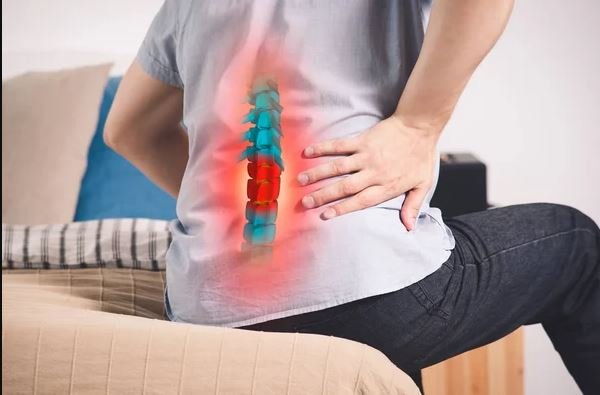Are you tired of living with the constant pain of sciatica? Imagine finding a solution that could ease your discomfort and improve your quality of life. Sciatica affects millions, causing pain that radiates from your lower back down to your legs. But does massage help sciatica? Many people have found significant relief through massage therapy, which not only reduces pain but also promotes relaxation and healing. Ready to explore how massage can help you feel better? Read on to discover the benefits and techniques that could transform your life.
What is Sciatica?
Table of Contents
Sciatica is a common condition that causes pain along the sciatic nerve. This nerve runs from the lower back, through the hips and buttocks, and down each leg. When something presses on the sciatic nerve, it can cause pain, tingling, or numbness in these areas.
Common Causes of Sciatica
Sciatica usually happens because of a problem with the spine. Here are some common causes:
- Herniated Disc: This is when a disc in the spine slips out of place and presses on the sciatic nerve.
- Spinal Stenosis: This is the narrowing of the spinal canal, which can squeeze the sciatic nerve.
- Piriformis Syndrome: The piriformis muscle in the buttocks can spasm and pinch the sciatic nerve.
- Injury: Accidents or falls can damage the spine and lead to sciatica.
- Degenerative Disc Disease: As discs in the spine wear down over time, they can irritate the sciatic nerve.
Symptoms and Diagnosis
Sciatica can cause a range of symptoms, including:
- Lower Back Pain: A dull or sharp pain in the lower back.
- Buttock Pain: Pain in one or both buttocks.
- Leg Pain: Pain that travels down the leg, sometimes reaching the foot.
- Numbness or Tingling: A feeling of pins and needles in the leg or foot.
- Weakness: Trouble moving the leg or foot.
To diagnose sciatica, a doctor will review your medical history and perform a physical exam. They may also use imaging tests like X-rays or MRI scans to see what is pressing on the sciatic nerve.
The Role of Massage Therapy in Treating Sciatica

Overview of Massage Therapy
Massage therapy involves manipulating the muscles and soft tissues of the body to relieve pain and tension. It is a popular treatment for various conditions, including sciatica, due to its ability to promote relaxation and healing.
How Massage Therapy Works
Massage therapy works by improving blood circulation and relaxing tight muscles. For sciatica, specific massage techniques can help reduce the pressure on the sciatic nerve, leading to pain relief and improved mobility.
Benefits of Massage for Sciatica Patients
Massage therapy offers several benefits for people with sciatica:
- Pain Relief: Regular massage sessions can significantly reduce sciatic nerve pain. Techniques like deep tissue massage and trigger point therapy target the areas causing discomfort, providing relief from chronic pain.
- Improved Mobility: By loosening tight muscles and improving circulation, massage therapy can help patients move more easily and comfortably.
- Reduced Inflammation: Massage helps reduce inflammation around the sciatic nerve, which is often a major source of pain.
- Stress Reduction: Sciatica can be stressful, and massage therapy promotes relaxation, reducing overall stress and anxiety.
Types of Massage for Sciatica Relief
Different types of massage can be effective in treating sciatica:
- Deep Tissue Massage: This type focuses on the deeper layers of muscle tissue, breaking down adhesions and relieving chronic muscle tension.
- Swedish Massage: A gentler form of massage that promotes overall relaxation and improves blood flow.
- Trigger Point Therapy: Targets specific points of muscle tension that may be causing sciatic nerve pain.
- Myofascial Release: Involves applying gentle, sustained pressure to the connective tissues to relieve pain and restore motion.
How Massage Helps Alleviate Sciatica Symptoms
Massage therapy helps alleviate sciatica symptoms in several ways:
- Enhancing Blood Circulation: Improved blood flow helps deliver oxygen and nutrients to the affected areas, promoting healing.
- Releasing Muscle Tension: Tight muscles can press on the sciatic nerve, and massage helps relax these muscles.
- Promoting Endorphin Release: Massage stimulates the release of endorphins, the body’s natural painkillers.
- Reducing Stress and Anxiety: By promoting relaxation, massage therapy helps reduce the stress and anxiety that often accompany chronic pain.
Read: Effective Theragun Use for Sciatica Relief
Traditional Treatments for Sciatica
Pain Medications
Sciatica pain can often be managed with medications. Over-the-counter pain relievers like ibuprofen and acetaminophen are common choices. For more severe pain, doctors may prescribe stronger medications, including anti-inflammatory drugs and muscle relaxants to reduce inflammation and ease muscle spasms.
Physical Therapy
Physical therapy is a key treatment for sciatica. Therapists use specific exercises and stretches to improve flexibility and strength, helping to relieve pressure on the sciatic nerve and prevent future issues.
Chiropractic Care
Chiropractic care involves spinal adjustments to improve alignment and reduce sciatic nerve pressure. This non-invasive treatment can provide significant pain relief and improve mobility.
Surgery: When Is It Necessary?
Surgery is a last resort, considered when other treatments fail. Common surgeries include discectomy, laminectomy, and spinal fusion, aimed at relieving nerve pressure and stabilizing the spine.
Self-Massage Techniques for Sciatica
Tools and Equipment
Using simple tools like a foam roller or tennis ball can help you perform self-massage at home. These tools are effective for targeting deep muscle tension and relieving sciatic pain.
Step-by-Step Guide to Self-Massage
- Foam Rolling: Sit on a foam roller and slowly roll your lower back and buttocks to release tight muscles.
- Tennis Ball Massage: Place a tennis ball under your buttock and gently move your body to find and relieve trigger points.
- Lower Back Massage: Use your hands to apply gentle pressure to your lower back, moving in circular motions.
Precautions and Tips for Safety
- Go Slow: Start with light pressure and gradually increase it.
- Avoid Pain: Stop if you feel sharp pain; self-massage should relieve discomfort, not cause it.
- Consult a Professional: If you’re unsure, talk to a physical therapist or massage therapist for guidance.
Read: Massage for Rheumatoid Arthritis Relief
Faqs:
How Often Should You Get a Massage for Sciatica?
The frequency of massages depends on the severity of your sciatica. Generally, starting with one to two sessions per week can help manage pain and reduce inflammation. As symptoms improve, you can reduce the frequency to once a month for maintenance. Always consult with your massage therapist to create a personalized plan that suits your needs.
Can Massage Make Sciatica Worse?
When performed correctly, massage therapy should not worsen sciatica. However, it’s essential to choose a qualified therapist who understands your condition. Some deep tissue techniques might cause temporary discomfort, but this should subside quickly. Communicate openly with your therapist to ensure a safe and effective treatment.
What Other Natural Remedies Can Help with Sciatica?
In addition to massage, several natural remedies can help alleviate sciatica symptoms. Physical therapy, gentle exercises, and stretching can improve flexibility and strength. Applying heat or ice packs can reduce inflammation and pain. Acupuncture and yoga are also popular alternative treatments. Combining these methods with massage can enhance overall relief and well-being.

